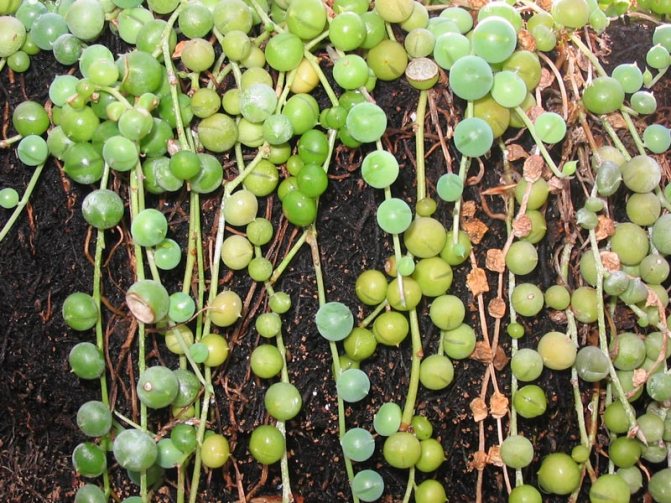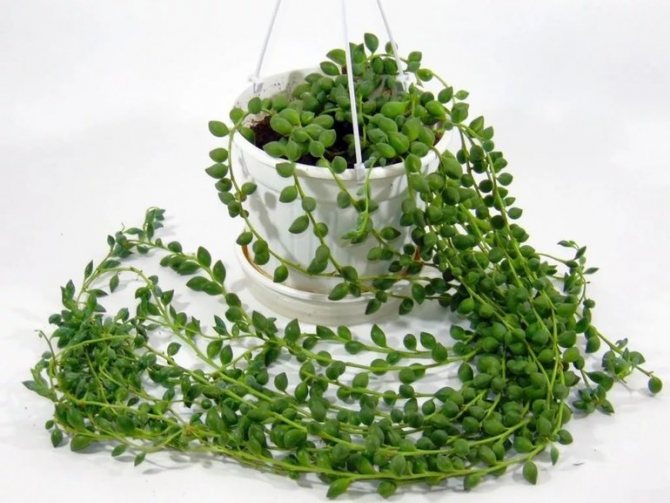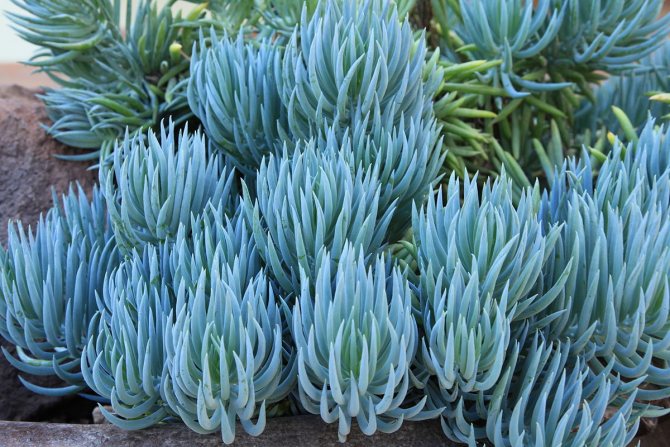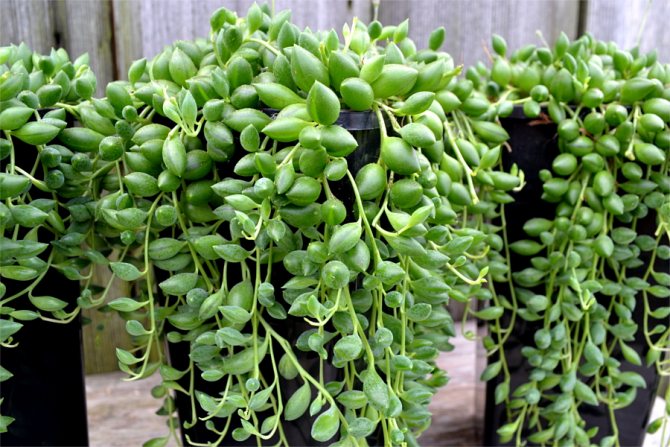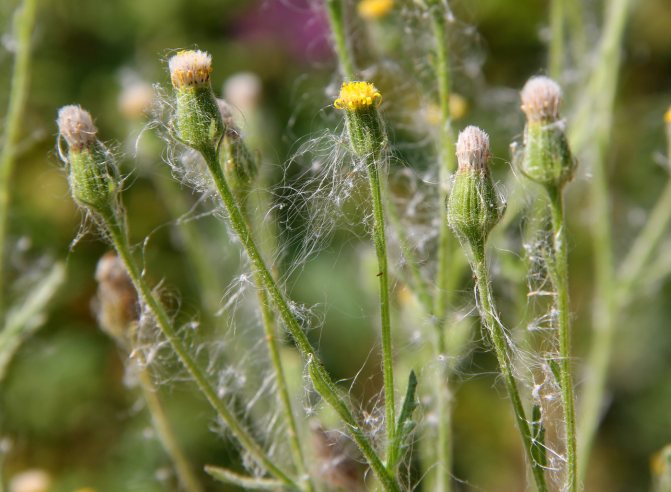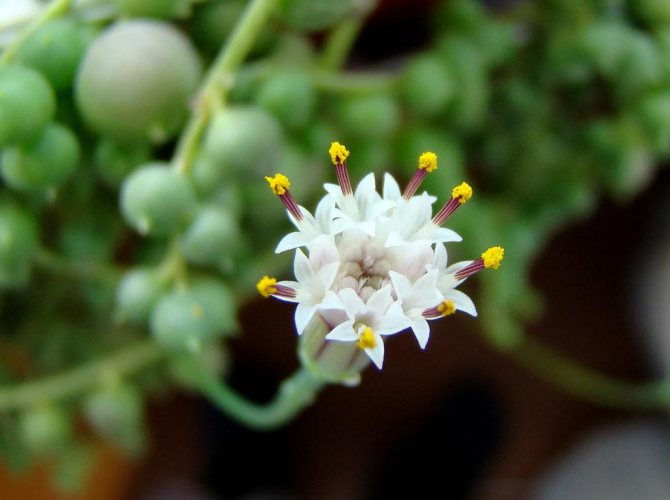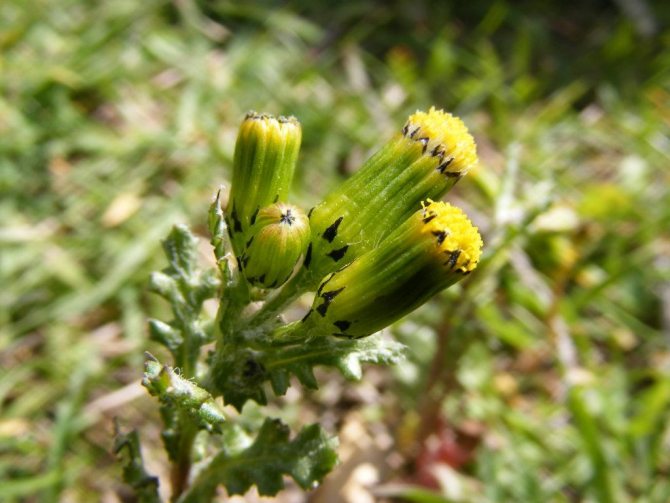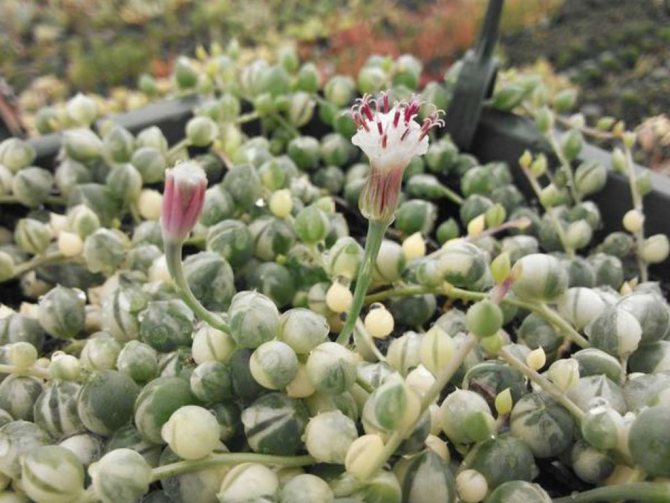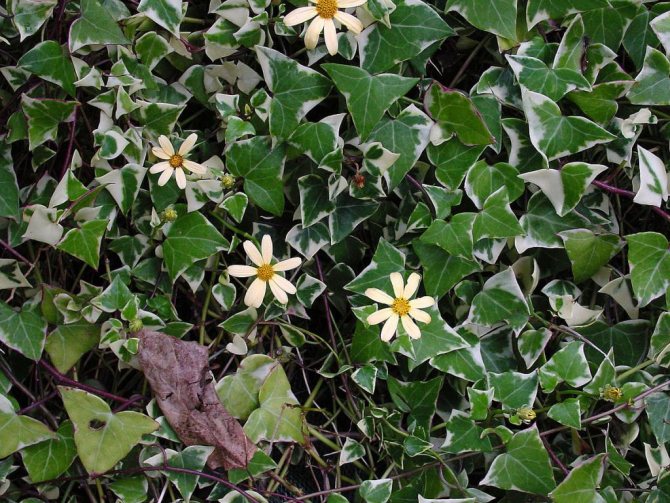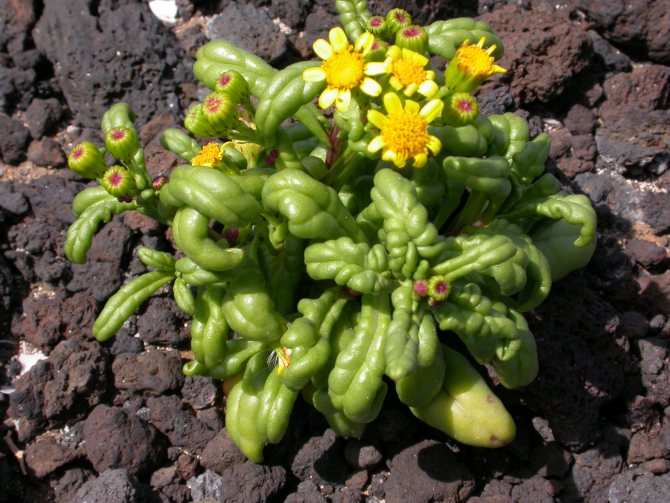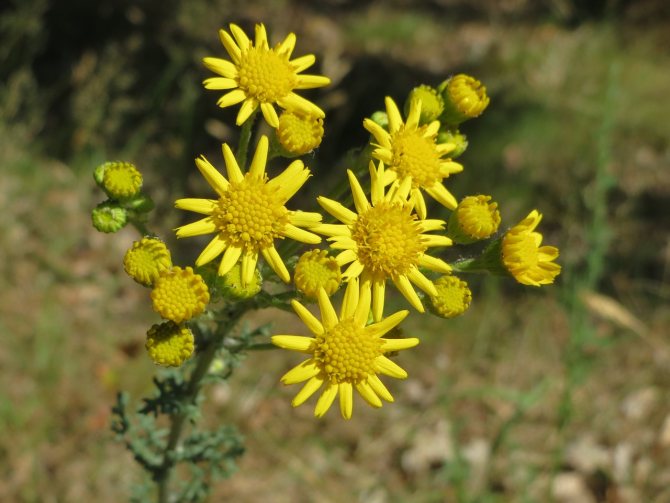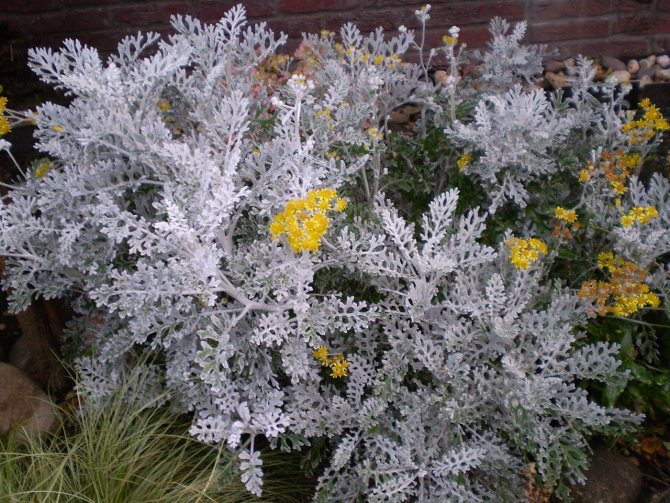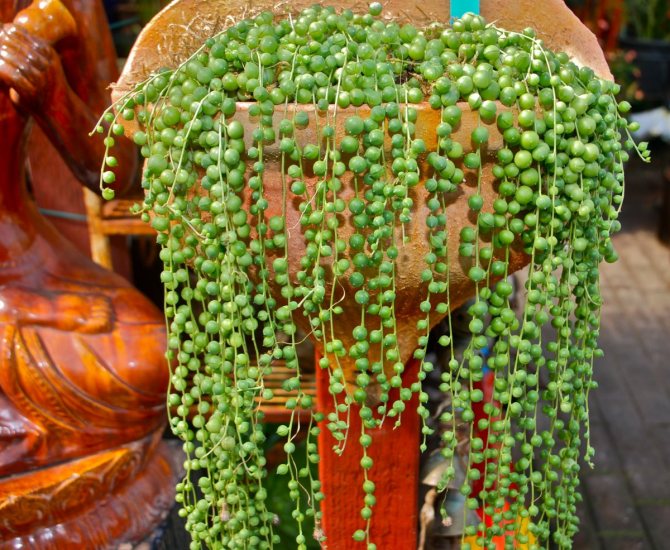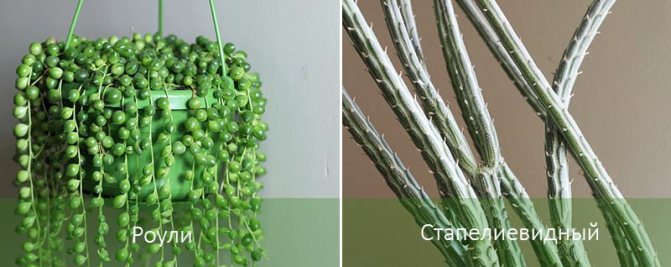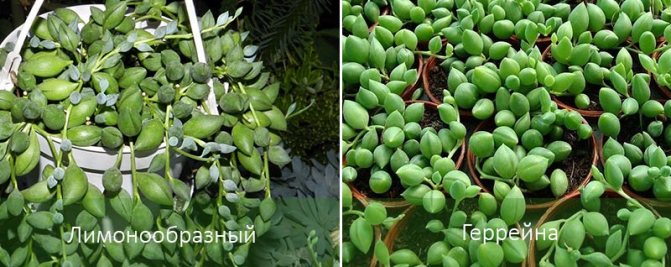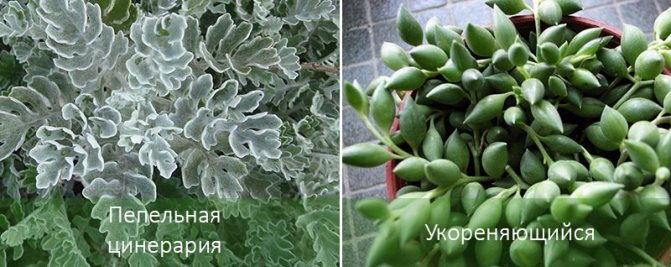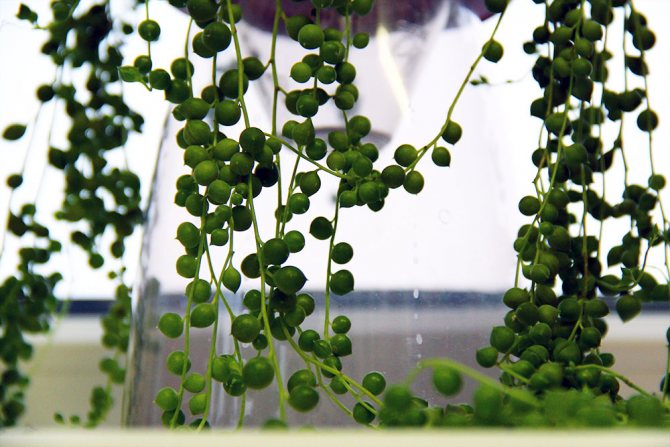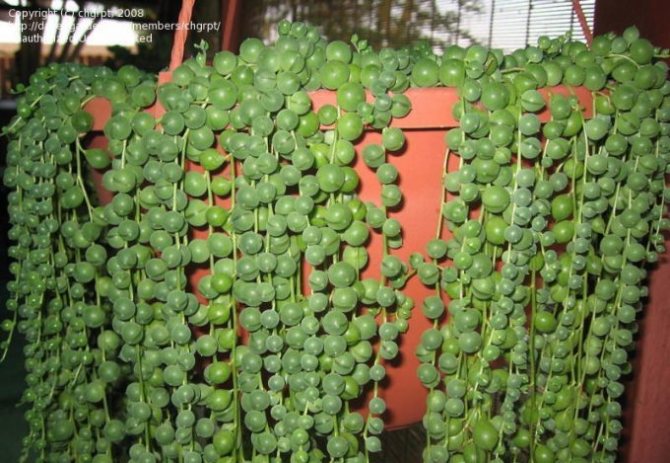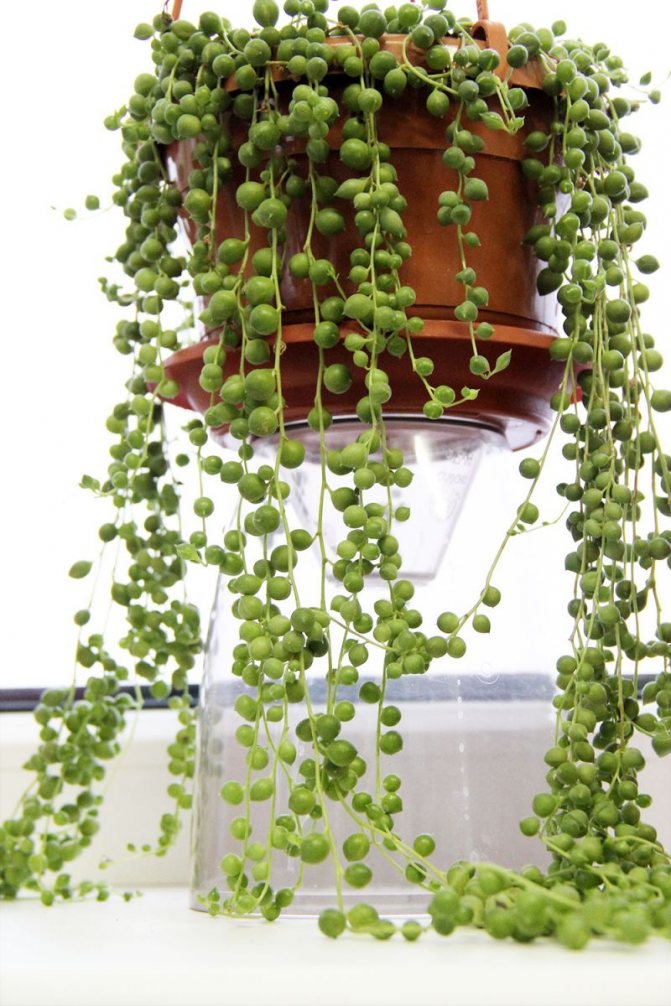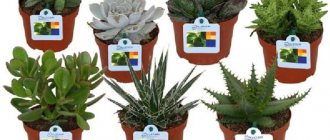The groundwort is a plant that belongs to the Astrov family. It's beautiful enough. It will appeal to those who do not like to devote a lot of time to leaving. After all, this flower does not have strict requirements for growing conditions.
You don't have to worry about soil moisture and nutrition at all. Therefore, you can leave home for a long time and not worry that the plant will wither or dry out.
The largest species of all existing in this family. In total, there are from one thousand to three thousand species. This includes both annuals and succulents. The list also includes shrubs and trees.
You can meet a plant on any land and in any climate. The groundwort grows in both the tropics and the Arctic. Most are found in the tropical climate of South America, as well as in the Mediterranean region. You can find a representative of the Aster family in other areas. For example, in Europe or Asia. Here he is in the temperate zone.
Description of the plant
The indigenous people of Namibia call succulent pearl threads. This phrase accurately characterizes the appearance of the groundwort: large green peas are located on long stems with a small interval. In the wild, the length of shoots can reach two meters, but at home they do not grow more than 70-100 cm. You need to plant a flower in a pots, then it will develop into a beautiful green waterfall.
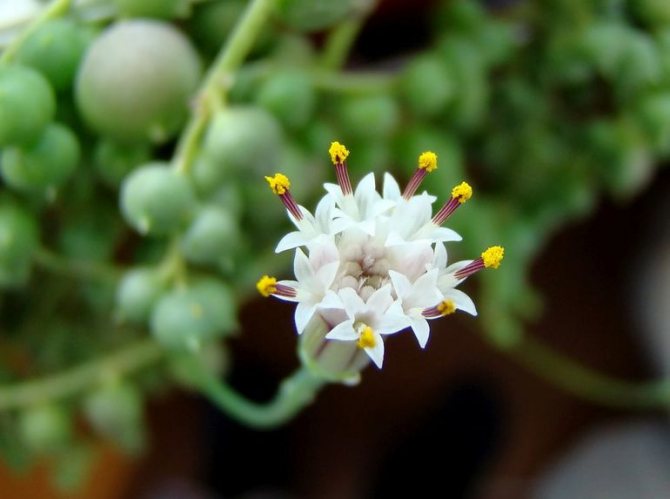
In spring, white or pale pink buds appear on the succulent, collected in inflorescences-baskets. Outwardly, they resemble dandelions, and their aroma is similar to cinnamon. At home, Rowley's rose flower is grown as an ampelous plant or planted in soil to create a composition with other crops. Scientists have already bred a variegated species, the leaves of which are covered with light strokes or spots.
It is not recommended to grow succulent plants in apartments with pets or small children.
Green pearls contain a dangerous poison that causes severe poisoning. And it is also forbidden to put pots with a rosewood in children's institutions - kindergartens, elementary schools. A child may mistake Rowley's leaves for gooseberries and eat them.
general information
The groundwort is a genus of plants from the Asteraceae family, consisting of a huge number of different species. The data vary, according to some of them it includes 1000 species, according to others - about 3000. There are ground plants in different parts of the world - from tropical regions to the Arctic, in the form of annuals and perennials of grasses, shrubs, trees and more. Most of the species grows in South America, Middle-earth, as well as in areas of Asia and North America with a temperate climate.
This is interesting! The scientific name of the genus - senezio, comes from the Latin word senex, which means "old, bald." This is due to the fact that after the seeds ripen, the baskets of the plants remain "naked" for a certain period.
Biologists associate the Russian name "crossworm" with the fact that common in Russia common groundworm looks like watercress, it is also a sowing bug. Sometimes you can find in the Russian literature the name of the genus "Senezio" - an exact transliteration of the name from Latin.
In russes, depending on the variety, the shoots are glabrous or fleecy, the leaves are located and look different.And if Rowley's roseae have bead-shaped leaves, then in other species they can be rounded or have the shape of a crescent. Flowers are collected in inflorescences - baskets, panicles or shields.
The root system of these plants is superficial, with underdeveloped roots.
It is important! All ground flowers are poisonous plants. They contain toxic substances that, penetrating into the body, slowly accumulate in the tissues of the liver.
When growing such a flower in a house, it is important to keep babies and animals away from it. It is best to use a hanging planter for a green pet.
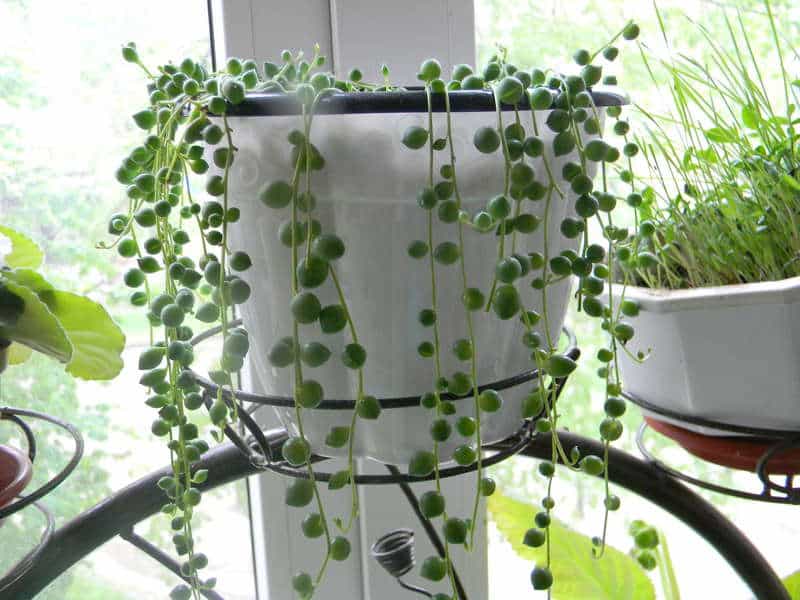

Types of crossworts
The groundwort is the largest genus among plants. Florists were able to adapt almost all types of succulents to home conditions.... But the most popular are:
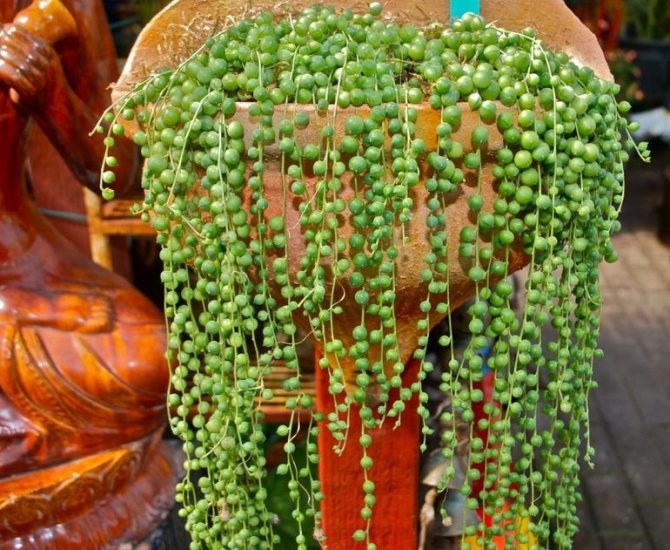

- Rowley;
- rhomboid;
- creeping (serpent);
- rooting;
- Haworth;
- stapeliform;
- large-reed;
- Guerra;
- arrow-nosed.
Rowley's groundwort, or Senecio Rowleyanus, grows very quickly, covering the pot with a waterfall of green peas. Spherical leaves reach a diameter of 1 cm, and their tops are pointed. A rhomboid plant or golden grass is distinguished by an undisturbed ribbed stem and large greens resembling a heart or bud in shape. Tubular bright yellow flowers are collected in baskets.
Senezio creeping Is a stunted shrub with thick shoots. Its leaves are like tongues, they are collected in rosettes. The color of the plant is bluish-gray, and its flowers are white.
The shoots of a rooting succulent are branched, grow up to 50 cm. They are covered with oblong fleshy claw-shaped leaves. The color of the green is dark, with longitudinal stripes.
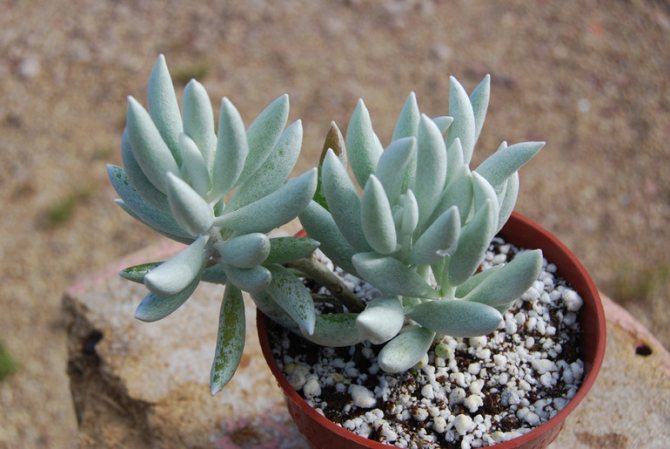

Haworth's tree grows up to 35 cm in height. Erect shoots with cylindrical leaves are covered with a whitish bloom. In summer, yellow or orange spherical flowers appear. The plant is very whimsical, so it is difficult to grow it at home. Stapellium succulent resembles a cactus in appearance. Thick ribbed stems grow up to 50 cm, they are covered with large thorns. The green color is diluted with dark and light stripes. At the ends of the shoots, red flowers appear, collected in bunches.
Macroglossus, or large-lingual groundwort, is also called Natal ivy because of its external similarity. The stems of the creeping plant can grow up to three meters, they are covered with spear-shaped leaves. In July, the succulent is covered with pale yellow tongue flowers. In the low shrub Guerra, the leaves look like gooseberries - they are fleshy, round with pointed tops. The color of the plant is dark green, it is complemented by light stripes.
The arrow-nosed succulent is different from the rest of the species. Its leaves are cylindrical in shape, they are collected in a basal rosette. It is covered with a silvery bloom, but as it matures, the plant grows overgrown with a light green fluff. The yellow flowers look like chamomile and appear on very long peduncles.
Harm from the grub: myths and truth
There are many myths among gardeners that the Rowley rosewort destroys the liver, contributing to the occurrence of cirrhosis and even cancer. Many varieties of such a houseplant are poisonous to one degree or another. If in contact with the skin, they can cause allergic reactions and skin irritation. But at the same time, the grub does not cause serious danger to human health, if you do not eat them.
The plant has a poisonous toxic sap that provokes allergies. It is not necessary to grow Rowley's rosewort with appetizing green berries where there are small children. Despite the prohibitions, they often reach for berries to taste them. Adults should also avoid exposure to toxic mucous membranes. For this, it is recommended to wear gloves and glasses for all manipulations.
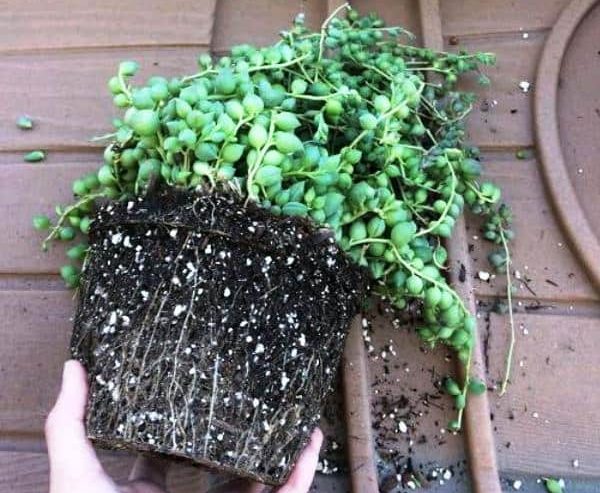

Diseases and pests
Green pearls are not susceptible to disease.Usually, his condition worsens due to a violation of the rules of care or when infested with insects. Most often it is affected by yellow spots with dryness around the edges. This is how gray rot manifests itself. It is formed due to excess watering. In order to cure Rowley's wild rose, it is enough to water it less and treat it with copper oxychloride.
If a cobweb appears between the leaves, then the succulent is surely affected by a spider mite. Yellow specks and dehydration are characteristic of thrips infestation. In order to get rid of parasites, it is enough to treat the plants with insecticides several times and rinse them with laundry soap dissolved in water.
Now read:
Leading Researcher of the Laboratory of Vegetable and Berry Crops, Yakutsk Research Institute of Agriculture, Siberian Branch of the Russian Academy of Agricultural Sciences, Republic of Sakha (Yakutia).
Growing conditions
The most popular among the peasants is Rowley. It is unpretentious, so even a novice florist can grow it at home. It is enough to provide him with suitable conditions:


- bright light;
- high air temperature;
- moderate watering;
- little moisture;
- periodic feeding.
You can place a succulent pot on any window except the north one. If the flower does not have enough light, its stems stretch out, and the color fades. Do not expect buds to appear either. On the south window, you need to protect the plant from direct sunlight - the lighting should be diffused. Better to hang transparent tulle.
In the summer, you need to provide the groundwort with warmth. Since it is an African plant, it is used to the heat. The air temperature from May to October should not drop below 23 degrees. In winter, you can lower it a little - to 15. In November, the succulent begins a dormant period, so a high temperature will lead to leaf fall.
Water the plant sparingly. During the active period - from March to October - it is enough to moisten the topsoil in the pot. And from November to February, frequent watering is not allowed. Stagnant moisture can lead to decay of the root system. It is easier for a succulent to tolerate drought than over-watering. It is recommended to use settled water at room temperature. It is poured only on the soil; you cannot water the stems and leaves.
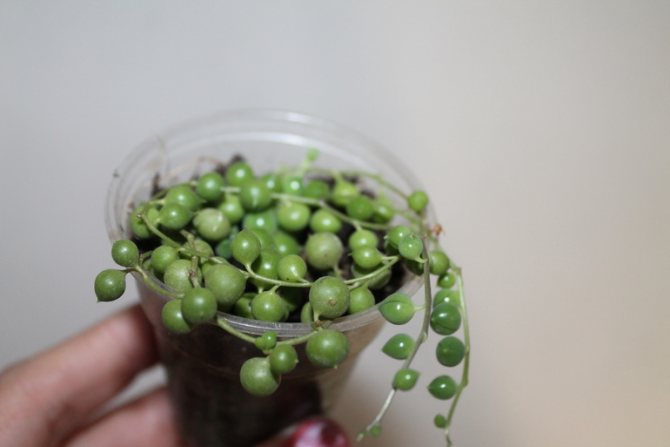

For Rowley, the humidity in the room is negligible. A dry climate is also suitable for the peasant, it does not need to be sprayed. But it is not recommended to place the pot near radiators and other heating devices. The succulent needs to be fed every two weeks. Concentrates for ornamental deciduous plants are suitable for him, but it is better to reduce the dose indicated on the package by half. You can also purchase special food for cacti and succulent plants. Rowley's flower does not need fertilization from November to February.
You do not need to prune the sprouts, but you can pinch them to speed up branching. For a year, under normal conditions, the stems grow by 20-30 cm. The succulent does not tolerate drafts, constant turns of the pot or frequent changes of scenery. It is better to immediately choose a place where the groundwort will grow and develop.
Diseases and pests
The representative of this species, although unpretentious, is still an exotic plant that needs certain conditions of maintenance and care. With errors in these matters, the flower weakens, loses its decorative effect, gets sick or is attacked by various pests. Most often, a succulent plant suffers from:
- lack of light;
- wintering in a warm place;
- excess moisture, especially if the plant is kept in the cold.
The latter threatens the grower with the death of roots and the development of powdery mildew. If a flower remains without watering for a long time, then it becomes a desirable prey for a spider mite.
If the leaves-balls are "blown away" and dry up, then you should urgently arrange a warm shower for your pet and moisten the soil. You can spray the succulent with warm beer or a weak alcohol solution.
In summer, indoor vegetation is often overpowered by aphids, and Rowley's groundwort is not immune from it. If parts of the plant are covered with a sticky coating, then treatment with soapy water and insecticides will be required. As a rule, weakened specimens get sick, with healthy, strong plants this happens extremely rarely.
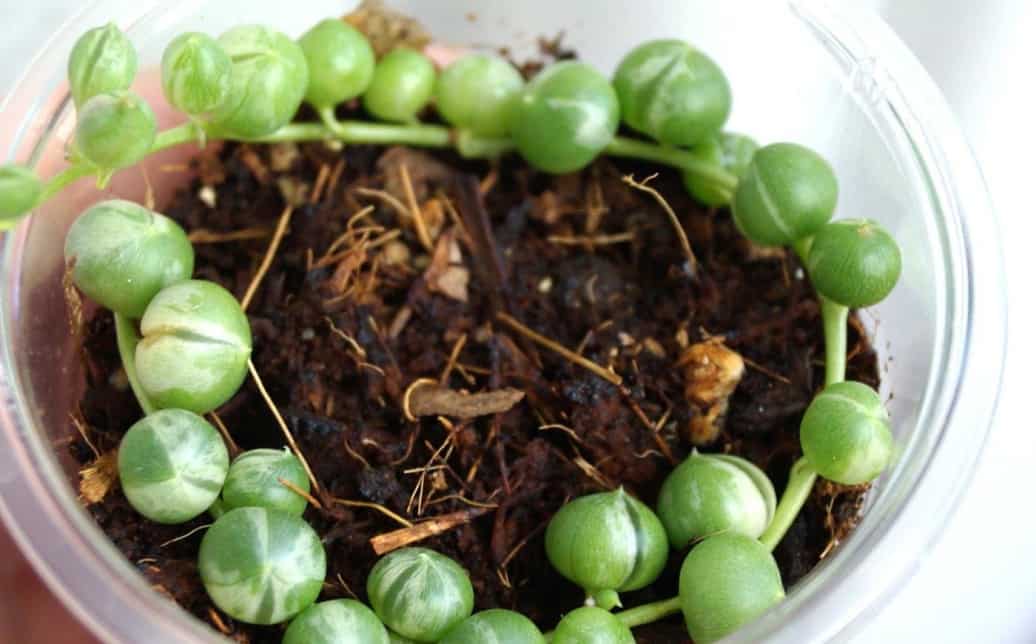

Flower transplant
Loose soil is ideal for planting succulents. It can be purchased at any flower shop. Although you can prepare the mixture yourself by mixing the components in equal proportions:
- humus;
- peat;
- sheet soil;
- perlite or brick chips;
- coarse sand.
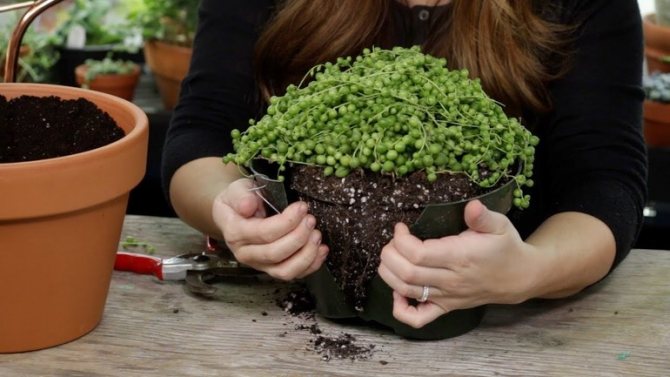

Every spring you need to repot the groundwort in a larger pot. The day before the procedure, the plant is watered so that the soil does not crumble from the roots. When transplanting, it is better to use the transhipment method, since Rowley does not tolerate any anxiety well. An adult succulent plant can live in one pot for 3-4 years. In a new container, it is imperative to make holes for water drainage and lay a layer of expanded clay to root the flower.
You need to choose a pot depending on the placement of the plant. Hanging baskets, wide bowls or tall flowerpots will do. The stems should travel along the ground or hang from the container. Rowley looks interesting in flowerpots made in the form of a female or male bust. The shoots will develop and resemble an African hairstyle.
If the rootworm has reached a large size, then it is better not to transplant it at all. Fragile roots and pearl leaves may suffer from anxiety. You can rejuvenate the flower in another way: it is enough to root the apical cuttings in new pots. It is better to remove bare shoots, as they spoil the appearance of the succulent.
There are many signs associated with the origin and development of the plant. Rowley's rose flower is suitable for single girls. It is believed that if a woman puts him at home, she will soon be married. The faster and more luxuriant the succulent grows, the happier her married life will be.
Care features
The wild rose is an absolutely undemanding flower, accustomed in nature to various weather twists and turns. Therefore, growing it is not difficult at all. It is important to observe conditions as close to natural as possible. Let's consider in more detail.
Location
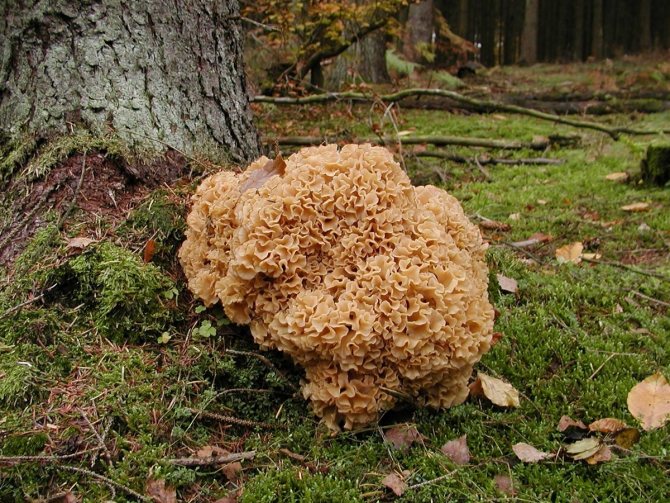

- Despite the unpretentiousness of the flower, choosing the right place is still a responsible business. Keep in mind that in the wild, this Namibian is accustomed to tropical climates and bright ambient lighting.
- If there is too much light (when determining the pot to the south side of the room), then the leaves and stems begin to acquire a brownish-brown color.
- When there is clearly a deficiency of the sun, the threads - the twigs are stretched, the leaves become very small. The structure of the bush becomes friable. The flowering period may not come at all.
- The most comfortable places for growing will be the western or eastern side of the room. You can hang a flowerpot in the south, only at some distance from the window.
- Daylight hours are preferable for Rowley's groundwort at least 12 hours a day. Therefore, the north of the apartment will not suit him. Additional artificial lighting will be required during the winter and autumn months. Experienced growers advise using special fluorescent or metal halide lamps that are adapted for indoor plants.
Temperature and humidity
The climate in indoor conditions should change depending on the season and different periods in the life cycle of the groundwort. From spring to the second decade of autumn, it is recommended to maintain the usual room temperature within +20 - 26 degrees.
With the onset of winter, the flower begins a dormant period. The thermometer should be lowered to +15 - 18 degrees.The plant must rest, gain strength. If the temperature required for the resting phase is not provided, then the plant's immunity weakens, the biological cycle is disrupted.
It should not be stored in a too cold room during the winter. Temperatures less than +12 can cause plant death. Also, the flower does not withstand too high a temperature and dry air. It must be kept away from the battery and other heating devices. A flower signals a problem by dropping foliage.
It is not required to maintain a high level of humidity. Rowley's groundwort tolerates average dry air normally. You can spray it, but only to remove the settled dust from the crown.
Watering and fertilizing
- Succulent plants do not like stagnant moisture in the pot and excessive waterlogging of the soil. Therefore, you need to water in small portions and infrequently. Only after the top layer of the earth in the flowerpot has dried.
- The soil mixture should be slightly damp, but not overdried or waterlogged. From the second half of March to mid-September, you need to water, at the beginning of the growing season, 2 - 3 times a week.
- Starting in autumn and during the winter months, the amount of watering should be reduced to 1 time per week. In winter, in a cooler room, you do not need to moisten the soil at all. If the room is warm, then periodic spraying of the crown is allowed.
- Water can be used exclusively without chlorine and lime, filtered or thawed. Tap water must be defended for several days, then moisten the soil in the pot with it.
- It is recommended to introduce additional nutrients during the active period of growth and development (spring and summer) 1 - 2 times every 30 days. You can use mineral complexes or special fertilizers for succulents. The dosage should be calculated as indicated in the instructions.
Do you need pruning?
Every year, the shoots of the groundwort grow only 20 cm. Therefore, especially the above-ground part is not cut off. You can trim the tops off so that the crown branches and grows more.
If you pinch the apical parts of the branches, then the lateral shoots begin to grow. If there is a need for formative pruning, then it should be carried out in the spring. Then, during the summer, the groundwort will fully recover and rejuvenate.
The flower does not like very much when it is rearranged too often to a new place. It is also advisable not to put the flowerpot in a place where there are drafts.
Reproduction of succulent
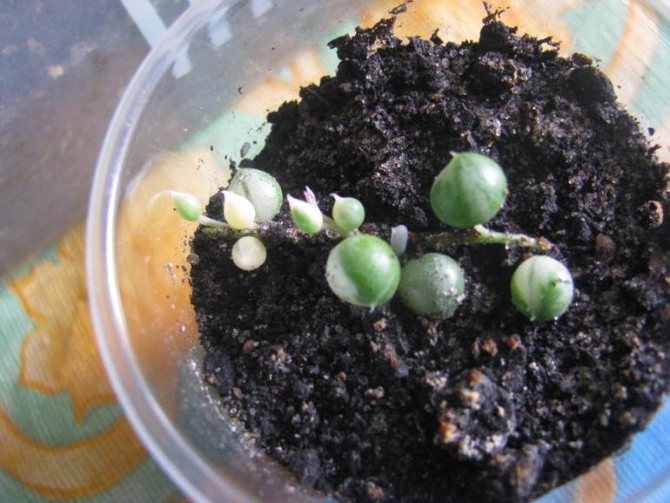

The flower propagates in two ways - by cuttings and layering. Cut tops 5-7 cm long are suitable for rooting. They are left in the air to dry for 2-3 hours. Then the soil is prepared, the drainage layer is placed in the pot and the soil is covered. 6-8 cuttings are immediately added to its surface, so the future succulent will look more magnificent. The soil is watered and monitored in the future. The pot is placed in a warm, lighted place.
If all the conditions are met, then in a week the first roots will appear. Successful germination can be expected only in spring and summer, in autumn and winter the plant is dormant. In the cold season, it is better to use the layering method.
A small container filled with prepared soil is placed near the pot with an adult groundwort. Several maternal shoots are placed on its surface, internodes are attached to the ground. It is better to remove the leaves in these places. Then the shoots are sprinkled with earth and watered a little. When new roots appear, you need to cut off the mother's stem, and place the pot with the young plant in a suitable place.
The most difficult way to reproduce is by seeds. At home, it is not always possible to grow a succulent in this way. The seeds are harvested and planted immediately, since in just a few days they lose their ability to germinate. Sow them in loose soil, sprinkle on top with a thin layer of earth and cover the container with glass or film.Every day the pot is ventilated and the plant is watered. Keep it in a warm place.
Rowley's groundwort breeding methods
Adult specimens need rejuvenation when their shoots are bare, the leaves become smaller, and the stem dries out at the base. Various methods can be used to propagate this plant:
Cutting and propagation by layering
After making oblique cuts, cut off several cuttings at least 6 cm long. They need to be well pressed against the moistened soil so that the foliage remains on the surface.
It is allowed to use the method of propagation by layering, when the stem is bent. It should first be cleaned of leaves at the rooting site.
The stem is sprinkled with soil substrate, moistened and watered with a rooting solution. Rooting, the layering takes place within a week, after which it must be cut off from the mother branch.
Later, you can begin to separate the young growth from the main plant and plant it in a separate tank.
It is better to plan the reproduction of a flower by cuttings in the spring or summer, in warm weather they adapt faster and give roots. The optimum air temperature for these processes is +13 - +16 degrees.
Advice! In order for the Rowley's rosewood to grow abundantly in the future and fall down in a luxurious cascade, it is recommended to plant from 7 to 9 cuttings in one container.
Propagation by seed
An easy way to grow pearls practically from scratch. Sowing seeds is best in early spring:
- a box should be prepared: a 3-4 cm layer of drainage material is placed in it, and then a small layer of soil substrate;
- the seeds are sown on the ground, you do not need to press them;
- sprinkle them on top with a small layer of substrate;
- the container is covered with film or glass to provide a greenhouse effect.
Caring for the seedlings of Rowley's groundwort consists in a daily 2-time ventilation of the reservoir and regular moistening of the soil from a spray bottle.
The success of the event largely depends on the freshness of the seed.
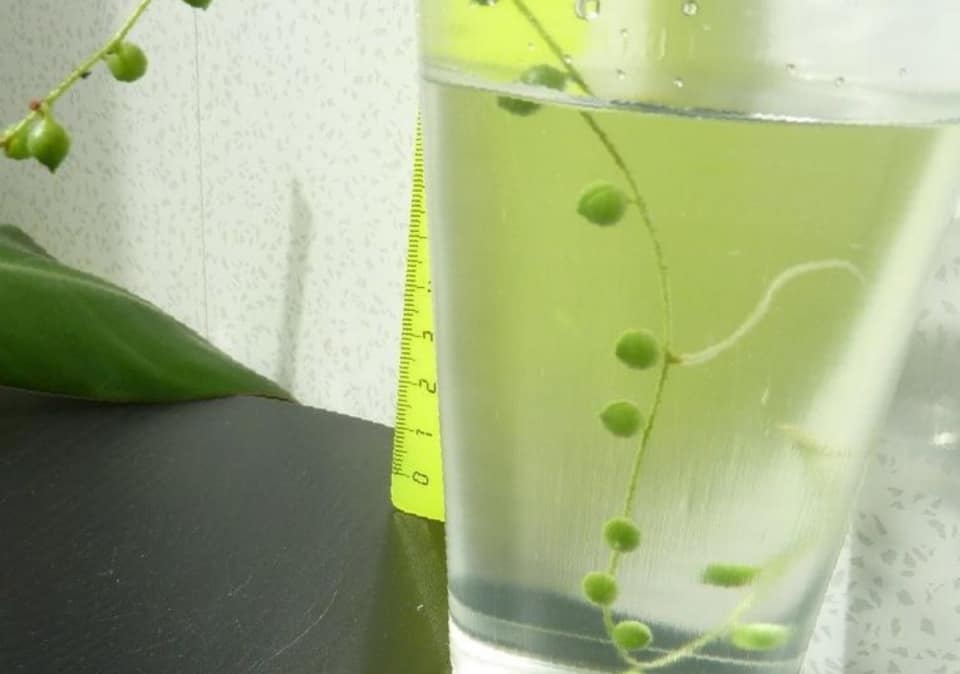

Landing rules
The young plant needs to be replanted every year. But when the root shoots fill the entire volume of the flowerpot, and there are too many shoots, then this is an indicator that it is necessary to transplant the flower. An adult plant needs this procedure every 3-4 years.
Sometimes the soil substrate needs to be replaced with a fresh and more nutritious one. Then you need to follow the following recommendations when landing.
- You need to be especially careful with the twigs: they are very fragile and delicate.
- The size of the new flowerpot should be 5 - 7 cm larger than the previous one.
- To prevent moisture from stagnating in the root system, a drainage layer must be poured onto the bottom of the pot.
- The soil can be applied ready-made for succulent plants or compiled on its own: mix the same proportions of leafy earth, vermiculite, sand, peat and humus until homogeneous.
Over time, an amazing flower begins to grow and lose its decorative effect. It is recommended to propagate it by grafting. After a week, the sprouts already have roots.


